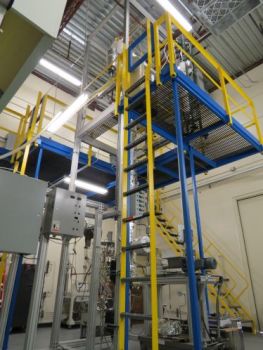Nov 14 2013
What: The University of California, Riverside Bourns College of Engineering will hold a ribbon-cutting ceremony to unveil a new steam hydrogasification reactor system. Following the ceremony, university researchers will conduct a tour and demonstrate how the technology works. California Energy Commission Chair Robert B. Weisenmiller will be in attendance to speak about the commission’s support of hydrogasification technology. State and local government officials in attendance will include: Senator Richard Roth, Assemblymember Jose Medina and Mayor Rusty Bailey of Riverside.
 The new steam hydrogasification reactor system.
The new steam hydrogasification reactor system.
When: 10 a.m. Tuesday, Nov. 19
Where:
Thermochemical Conversion Process Laboratory
UC Riverside’s Center for Environmental Research and Technology
1084 Columbia Ave.
Riverside, CA 92507
Note: This is an off-campus location and parking is free. Directions are available at www.cert.ucr.edu/contact.html
Who:
Reza Abbaschian, Dean, UC Riverside Bourns College of Engineering
Kim A. Wilcox, Chancellor, UC Riverside
Robert B. Weisenmiller, Chair, California Energy Commission
Richard Roth, California State Senator, District 31
Jose Medina, California State Assemblymember, District 61
Rusty Bailey, Mayor of Riverside
Researchers from UC Riverside, including Joseph Norbeck, UC Riverside professor emeritus, will be on hand to talk about the reactor and demonstrate how it works.
Why: In a carbon-constrained world, our energy sources will need to be cleaner and more efficient for the benefit of the environment and public health. The success of hydrogasification technology could result in cost-effective and environmentally friendly natural gas production from California’s local waste resources, which can be used as clean burning transportation fuel or for electricity generation. The advanced steam hydrogasification process, which has been in development at UC Riverside for more than a decade, uses steam, recycled hydrogen and carbon-based materials, such as yard waste and agricultural waste, into fuel. The new reactor is 12 percent more efficient and can process material 10 times faster than conventional dry gasification systems. Over the past several years, the California Energy Commission has funded over $3.4 million on early technology projects leading to the development of the system.